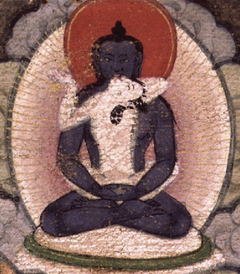Dzogchen Series
English (99) | Deutsch (17) | Español (17) | Français (32) | Português (17) | Italiano (5) | 中文 (59) | བོད་ཡིག (99)
The following texts are available as part of our Dzogchen (rdzogs chen) or Great Perfection series:
English (99) | Deutsch (17) | Español (17) | Français (32) | Português (17) | Italiano (5) | 中文 (59) | བོད་ཡིག (99)
The following texts are available as part of our Dzogchen (rdzogs chen) or Great Perfection series:

Samantabhadra and consort
Courtesy of Himalayan Art Resources
Vajrayāna Buddhism places restrictions on the reading and practice of certain texts, which are intended only for those who have received the requisite empowerments, transmissions and instructions.
If you are unsure as to whether you are entitled to read or practice a particular text please consult a qualified lineage-holder.